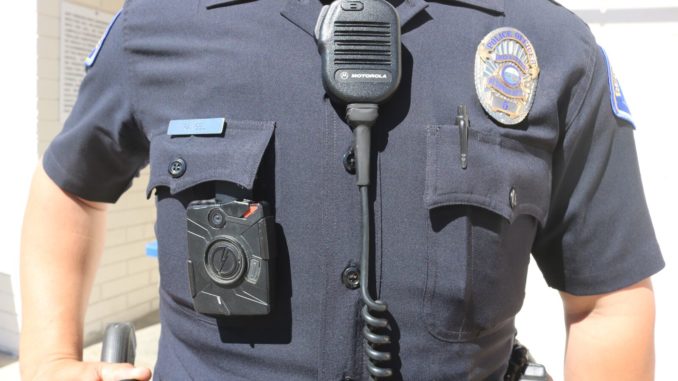
Michael Beeli
Staff Writer
The Manhattan Beach City Council unanimously approved the installation of community license plate-reading cameras at seven points of entry along the Manhattan Beach city border during its April 5 meeting.
The police can use the data from the video cameras and LPRs to provide investigative leads and valuable visual evidence, Manhattan Beach City Council member Wayne Powell said. The Manhattan Beach City Council was then asked to approve, discuss and provide direction for the staff report, a report containing information about the cameras and where to place them.
“The Manhattan Beach Police Department’s priority is to maintain public safety within the community,” MBPD Chief Eve Irvine said. “The addition of community cameras and LPRs may deter criminals from entering our city and aid in solving crime.”
MBPD arrest statistics over the last two years show that the majority of offenders who commit burglaries in Manhattan Beach are non-residents. Therefore, the installation of cameras and LPRs strategically at high-traffic intersections will aid in the detection and apprehension of criminals as they enter and exit the city, Irvine said.
“The MBPD is always looking for innovative ways to solve crimes,” Officer Jon Loy said. “This program is another addition to community policing that continues to bring the community and police department together.”
The staff report detailed approximately 50 points of entry into Manhattan Beach as possible locations for the cameras; however, the seven proposed locations were chosen as the most strategic places that will capture the maximum number of vehicle traffic, according to the staff report. The number was limited to seven in order to avoid excessive costs while still pinpointing the areas with the most amount of traffic flow in and out of the city, according to the staff report. The locations cover Rosecrans, Aviation, Sepulveda, Artesia, Manhattan Beach Boulevard and Highland Avenue, which are along the city border.
“The costs are minimal because it is just storage of voluntary contact information regarding surveillance equipment,” Loy said.
Manhattan Beach has joined a growing number of Los Angeles County cities, such as Long Beach, Beverly Hills and Palos Verdes, to implement community cameras and LPR cameras. According to the staff report, the combination of cameras and LPRs has proven effective at assisting law enforcement officials in discovering investigative leads in surrounding areas.
“Surveillance equipment is becoming more prevalent in most communities and offers another solution to capturing evidence of crime that occurs,” Loy said. “Having the information of surveillance equipment in the area of a crime enhances the police department’s capability of retrieving evidence of the crime and acting upon the evidence.”
The LPRs, which do not move, scan license plates of all vehicles, transmitting the plate information to MBPD. The plate information will then be checked against a database for unresolved violations and warrants by MBPD to try and catch criminals entering and leaving the city. High definition video cameras are also being installed with the LPRs to monitor public roadways to help capture information regarding suspect vehicles on the way into and out of Manhattan Beach.
I think [the cameras are] going to be a great asset to the community,” Manhattan Beach Mayor Mark Burton said.
Unrelated to security cameras but still camera-security based, MBPD announced the Camera Registration Program through a public notice online on Feb. 18. The program allows Manhattan Beach residents to register their private security cameras with MBPD so that the police department may notify registered camera owners when a crime has occurred nearby. MBPD spokesmen will also request that the camera owner let MBPD use the footage in order to potentially generate information about crimes comitted in the area. As of April 5, the police department has 51 registered cameras primarily from residential addresses, Powell said.
“The Camera Registration Program will not replace the current practice of officers and detectives walking the neighborhood and contacting locations for video evidence,” Irvine’s press release said. “However, it will allow the police department to expedite our investigations in a collaborative effort with our community.”
According to the 2016-17 MBPD budget, the cameras have no immediate costs because the cameras are not paid for immediately, and basic coverage of the project could be achieved with as little as $400,000. Taylor anticipates a six to eight-month timeline for full implementation of the cameras and LPRs, depending on how the city generally progresses with the project. The timeline for installation includes the possibility of a formal bid process, presentation of potential company recommendations to city council and installation. If all goes as planned, the cameras would be fully implemented by September or October, the staff report said.
“If the LPR devices were free or nearly free, I would support them fully, but at a cost of $400,000, I question whether this money is well spent,” Manhattan Beach resident Eric Arentsen said.




Leave a Reply